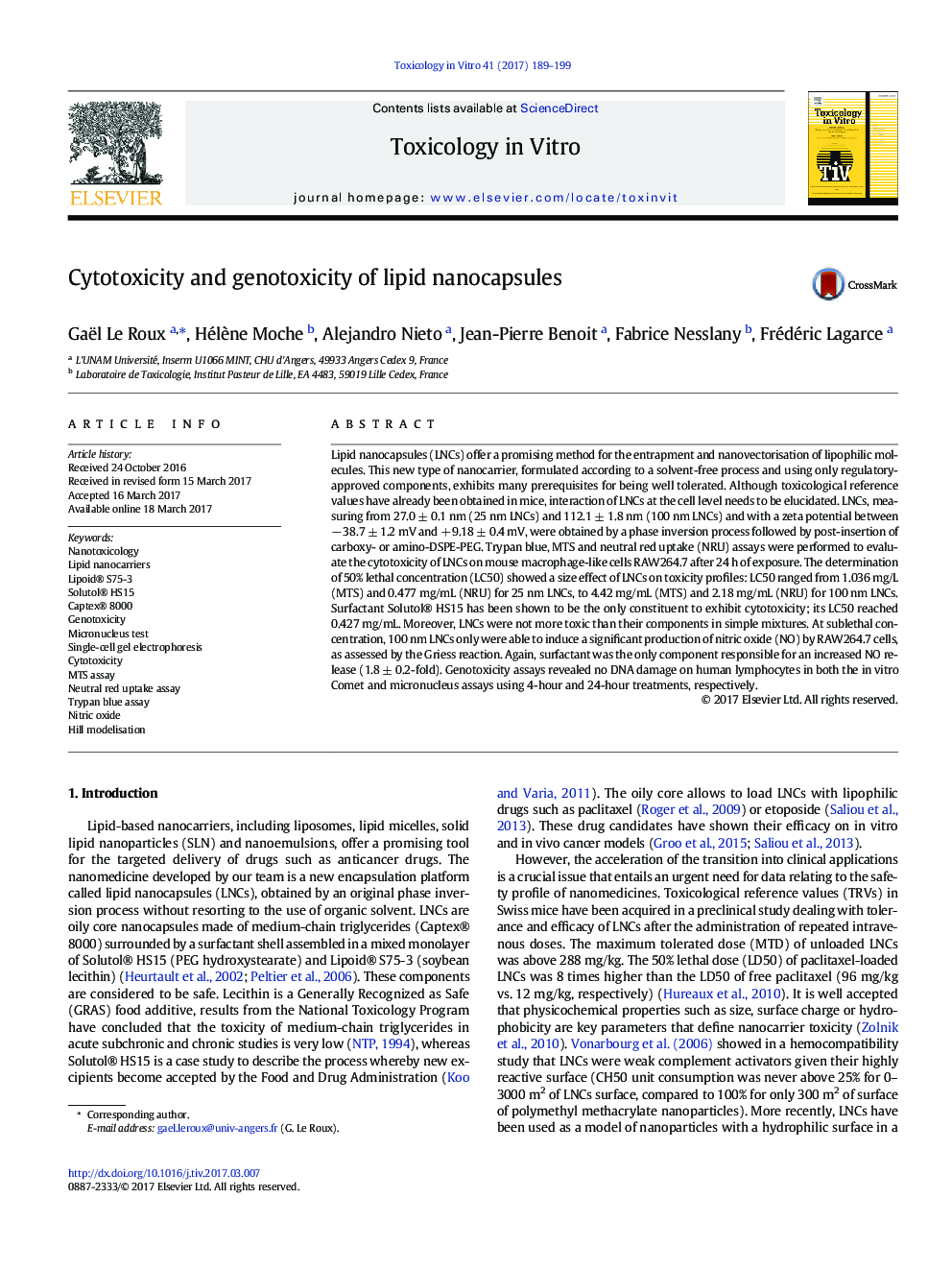| کد مقاله | کد نشریه | سال انتشار | مقاله انگلیسی | نسخه تمام متن |
|---|---|---|---|---|
| 5562676 | 1562704 | 2017 | 11 صفحه PDF | دانلود رایگان |
- In vitro data concerning a pharmaceutical nanocarrier called lipid nanocapsules (LNCs) have been determined.
- There is an inverted relation between size of LNCs and toxicity.
- Surfactant used in formulation appears to be responsible of the toxicity.
- LNCs exhibit no genotoxic effect.
- The low cytotoxic profile of LNCs makes them a promising tool for drug encapsulation.
Lipid nanocapsules (LNCs) offer a promising method for the entrapment and nanovectorisation of lipophilic molecules. This new type of nanocarrier, formulated according to a solvent-free process and using only regulatory-approved components, exhibits many prerequisites for being well tolerated. Although toxicological reference values have already been obtained in mice, interaction of LNCs at the cell level needs to be elucidated. LNCs, measuring from 27.0 ± 0.1 nm (25 nm LNCs) and 112.1 ± 1.8 nm (100 nm LNCs) and with a zeta potential between â 38.7 ± 1.2 mV and + 9.18 ± 0.4 mV, were obtained by a phase inversion process followed by post-insertion of carboxy- or amino-DSPE-PEG. Trypan blue, MTS and neutral red uptake (NRU) assays were performed to evaluate the cytotoxicity of LNCs on mouse macrophage-like cells RAW264.7 after 24 h of exposure. The determination of 50% lethal concentration (LC50) showed a size effect of LNCs on toxicity profiles: LC50 ranged from 1.036 mg/L (MTS) and 0.477 mg/mL (NRU) for 25 nm LNCs, to 4.42 mg/mL (MTS) and 2.18 mg/mL (NRU) for 100 nm LNCs. Surfactant Solutol® HS15 has been shown to be the only constituent to exhibit cytotoxicity; its LC50 reached 0.427 mg/mL. Moreover, LNCs were not more toxic than their components in simple mixtures. At sublethal concentration, 100 nm LNCs only were able to induce a significant production of nitric oxide (NO) by RAW264.7 cells, as assessed by the Griess reaction. Again, surfactant was the only component responsible for an increased NO release (1.8 ± 0.2-fold). Genotoxicity assays revealed no DNA damage on human lymphocytes in both the in vitro Comet and micronucleus assays using 4-hour and 24-hour treatments, respectively.
Journal: Toxicology in Vitro - Volume 41, June 2017, Pages 189-199
